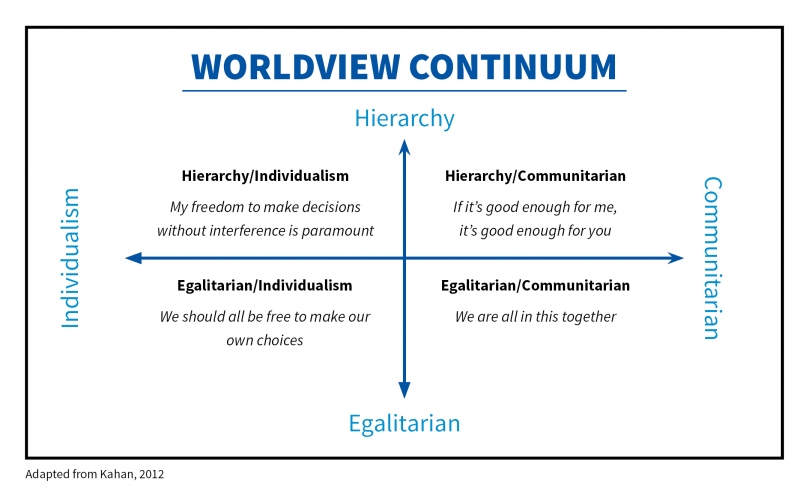Over the next two weeks, we’re sharing some of the ways NOAA monitors and predicts, responds to, and prepares for the impacts of climate change. In this guest blog from NOAA's Office for Coastal Management, learn more about the importance of risk communications in the climate crisis.
There are many aspects to consider when it comes to preparing communities for climate change. One that none of us should consider shortchanging is the need to update our risk communication skills.
I am understandably biased, as I think communication plays an important role in just about every endeavor. But this skill set is particularly important here. There are a lot of us, myself included, who would prefer to stick our head in the proverbial beach sand instead of contemplating, much less preparing for, bad things that might happen in the future. Add to that the segment of the population who think climate change is overblown, or just can’t get comfortable with something that is presented in terms of probabilities.
But climate change is real, and for many locations, the impact will be huge. For those of us in this field, we are not doing our jobs justice if we don’t do what we can to prepare citizens and help them understand what they can do to protect themselves. But first our message has to be heard. And understood.
There are numerous organizations and courses focused on helping scientists talk to James and Josephine Citizen. That’s really important. At my organization (NOAA’s Office for Coastal Management), we have a section in our training department that offers several courses and publications designed to help people improve their risk communication skills, and the resources offered are excellent.
My favorite starting point is this publication: “Risk Communication Basics.” It’s only 15 pages long, but it is packed full of good information that is easy to digest.
Know Thy Audience
I know, I know. “Knowing your audience” is the number one requirement of any communication strategy. But when it comes to talking about climate change, target audiences may represent demographics you aren’t familiar with. To be successful, you need to understand each audience’s perspectives and values, and be able to address their specific concerns.
This publication focuses on the science concerned with figuring out how people see the world, which is a good thing to know for effective communications to occur. One consideration has to do with the “worldview” the person holds. Social science studies show how people unconsciously connect perceived risk to the proposed solutions; if the solution conflicts with their worldview, they are likely to downplay the risk or dismiss the threat altogether. Understanding your audience’s worldview provides clues for conducting a successful communication strategy.

-
People who lean toward individualism think society functions best with fewer regulations, letting people decide things for themselves. A conversation framed around individual preparedness may resonate best.
-
Those on the communitarian side of the equation think society functions best when people work together for the common good, with rules and regulations to guide everyone. Framing the conversation around “community preparedness” would be a good bet.
-
Those with a hierarchy worldview tend to value more clearly defined ranking systems. The research suggests a “loss”-framed message (talking about what the audience stands to lose) might be more successful.
-
For those with egalitarianism values, equality of all people is important. Emphasizing what the community can gain is an approach to consider.
Inspiring Risk-Wise Behavior
Risk communication research shows people will gradually change their minds and behaviors when presented with information that affirms how they view the world and what they already believe. This means the communicator must listen to the audience to understand their worldview and what matters to them, and to shape or frame their message to affirm these values.
This transfer certainly doesn’t happen overnight, and there are no magic words, no perfect phrases to make this happen. Simply providing more information is not enough. Presenting the same facts over and over again doesn’t work either. You have to provide information that the audience wants, and present it in the way they are most likely to respond to. Make it local. Make it personal. Focus on what residents are already observing, and avoid a debate about technical details.
None of this is easy, which is why I believe our risk communication resource page is so helpful. Take a class. Review a document or two. Or contact our risk communication specialist, Stephannie.Fauver@noaa.gov. I’m sure she would love to hear from you.
Donna McCaskill is the communications lead for NOAA's Office for Coastal Management. Donna holds a marketing and public relations degree from the University of South Carolina. Her work experience includes newspapers, a hospital, and a state agency. Donna's office publishes a monthly newsletter about communications. Visit Coastal Communicators to subscribe and see past issues.
